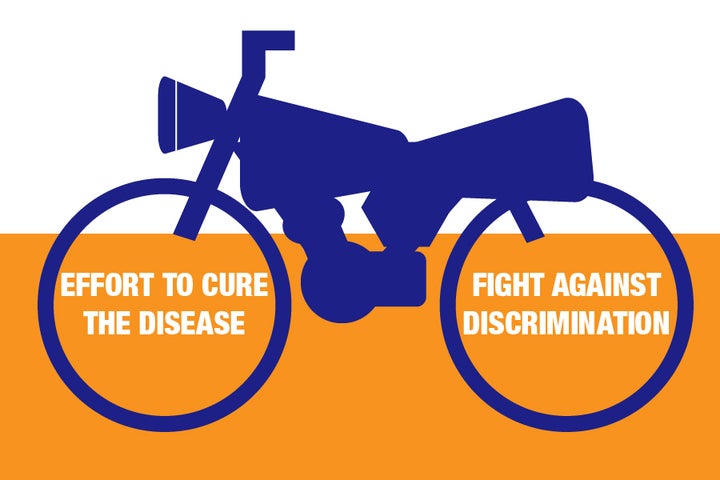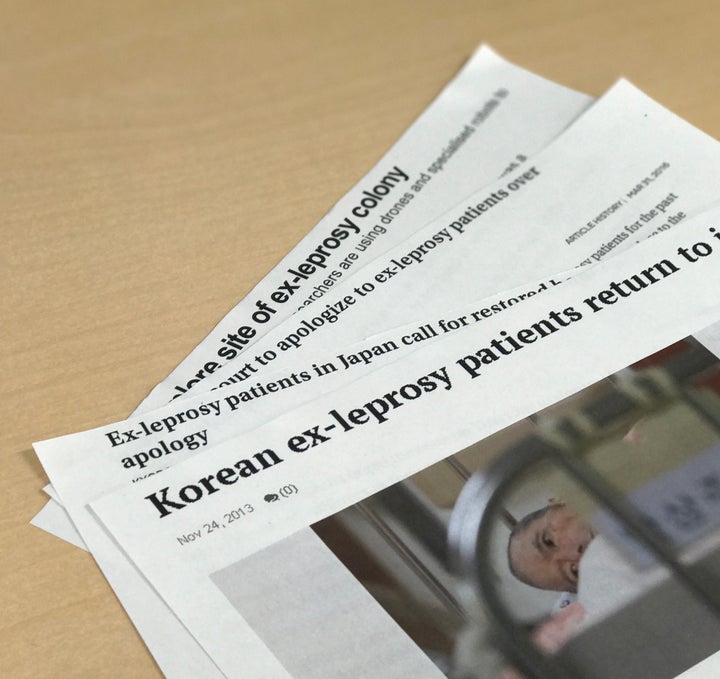
Motorcycle heading toward a leprosy-free world
For over 40 years now, I have been working to eliminate leprosy. For the first twenty years, curing the disease was my main focus. Thanks to the introduction of effective treatment, the number of patients decreased. But I began to see that everyday life hardly changed for them even after being cured. They are labeled ex-patients. The stigma remains. I began to focus more on issues of the stigma that they suffer.
Patients of leprosy are often abandoned by their families and communities. And even after being cured, they are not allowed to return to their community. They continue to suffer discrimination and stigma associated with leprosy. Those who once had leprosy are identified as “ex-patients.” Among the many diseases that exist, there is no other disease like this. Those who have recovered from a cold or been cured of tuberculosis or cancer are not identified by the disease they had in the past.

Headlines referring to “ex-leprosy patients”
Although I have not seen any anthropological or historical evidence, I would venture that in the history of humankind, discrimination and leprosy are very much interrelated. I have seen many persons with leprosy discriminated against, ostracized, and even abandoned by their family. Their family members are also subject to discrimination.
Fearing discrimination, families sometimes throw them out or hide them away. I have witnessed this myself many times, and I would say that discrimination against leprosy is culturally entrenched around the world. Leprosy is a disease that makes us think deeply about what it means to be human.
Because of discrimination, treatment is often delayed. Those who become aware of early symptoms tend to avoid diagnosis. Families sometimes hide their children away when they show symptoms instead of taking them to the hospital. In many cases, without treatment, symptoms will continue to develop, eventually resulting in disability. In this way, even though effective treatment now exists to cure leprosy, discrimination is a major impediment to early diagnosis and treatment.

Diagnosed with leprosy, this young woman cannot hide her shock. Later she is told by the doctor that it is curable. (Papua Province, Indonesia)
When I discuss leprosy and the problems related to it, I often use the metaphor of a motorcycle. The image came to me in 2004 while watching the film “The Motorcycle Diaries.” In the film, Che Guevara, a young medical student at the time, and his friend, Alberto Granado, travel across South America on a motorcycle, visiting several leprosy hospitals on the way.
Inspired by their journey, I began to think of the disease and the discrimination it causes as the two wheels of a motorcycle. The front wheel represents the effort to cure the disease, and the back wheel is the fight against stigma and discrimination. The motorcycle moves forward only if both wheels are working in tandem. Where is this motorcycle headed? Our goal is a leprosy-free world. This can only be achieved by addressing both the disease and discrimination.
We are nearing our goal and there is one more mile to go. But the last mile will be a long one.
